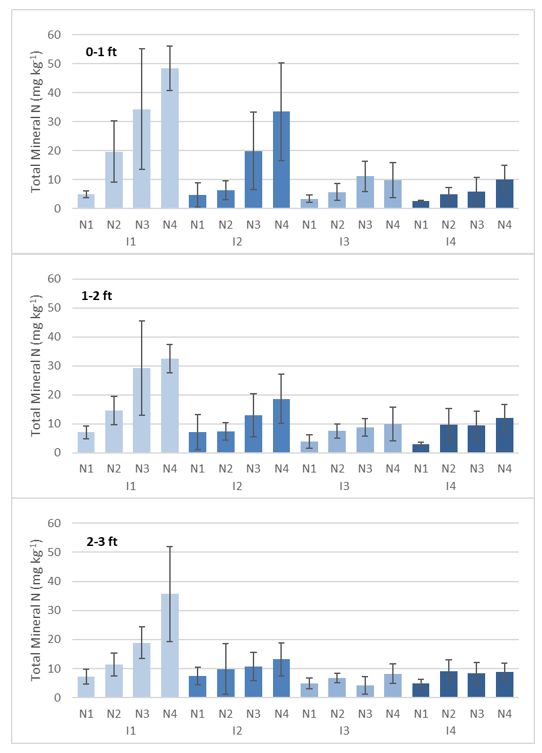Note: This is part of a Research Update series that highlights projects funded by the California Department of Food and Agriculture (CDFA) Fertilizer Research and Education Program (FREP) annual grant program.
Project Title: Assessing Drip Irrigation and Nitrogen Management of Fresh Onions Produced in California Low Desert
Project Leader: Jairo Diaz, Director, Desert Research & Extension Center, University of California, Division of Agriculture and Natural Resources (UCANR)
Project Status: Year one (Three-year project)
Overview: This FREP-funded project evaluates the response of onions to irrigation regimes and compares onion production under different nitrogen (N) fertilizer application rates. This project also communicates findings directly to growers, as well as to crop advisors, academics, regulatory bodies, and the agriculture industry.
Background: California’s Imperial County is one of the largest onion production regions in the nation and relies heavily on the Colorado River for irrigation. To prevent soil salinization and enhance agricultural production in Imperial County, growers apply excess water to leach salts from the root zone. Excess irrigation as well as municipal and industrial discharges from the Imperial, Coachella, and Mexicali valleys flow into the Salton Sea, resulting in high concentrations of nutrients, salts, and toxic compounds. Growers must adopt improved irrigation and nutrient management practices to reduce water pollution from excess nutrients in California’s low desert region.
Approach: Researchers used sprinkler irrigation for crop emergence to ensure adequate establishment and afterwards, applied irrigation regimes using drip irrigation. Irrigation treatments consisted of 40, 70, 100, and 130% of crop evapotranspiration (ETc) and in-season N treatments included 0, 75, 150, and 225 pounds (lbs.) of N per acre (lb/ac). Soil samples were collected at pre-plant, mid-season, and post-harvest to measure mineral N (ammonium-N and nitrate-N) from the top 3 feet of soil in 1-ft increments.

(Left) The onion irrigation and nitrogen rate trial at the University of California Desert Research and Extension Center, Holtville, CA. (Right) Accumulation of salt can be seen in the high irrigation treatment plots.
Results: The first-year results showed that across all irrigation treatments, the mineral N concentration in the top foot of the soil profile significantly increased with increasing N application rates. Across all N treatments, mineral N tended to decrease with increasing irrigation water applications, however, this trend was not statistically significant. In May, after the onion harvest, in all three soil depths the amount of mineral N remaining in the soil significantly increased with increasing N application rates and significantly decreased with increasing irrigation application rates (Figure 1).

Figure 1. Post-harvest mineral N concentrations in the soil profile. Irrigation treatments I1 to I4 correspond to water applications of 40, 70, 100, and 130% of ETc, while N treatments N1 to N4 correspond to in-season N application rates of 0, 75, 150, and 225 lbs./acre.
A comparison between the amount of mineral N present in the soil profile at pre-plant and the mineral N left in the profile after onions were harvested shows that mineral N accumulated at the lowest irrigation rate (40% ETc) during the season, except in the zero-N treatment (Figure 2). With an irrigation rate corresponding to 70% ETc, only the highest two N application rates resulted in an accumulation of mineral N in the soil profile. The soil mineral N pool was depleted at all N fertilization levels with the two highest irrigation treatments.

Figure 2. Changes in mineral N content in the soil profile between the pre-plant and post-harvest sampling dates. Irrigation treatments I1 to I4 correspond to water applications of 40, 70, 100, and 130% of ETc, while N treatments N1 to N4 correspond to in-season N application rates of 0, 75, 150, and 225 lbs./ac.
High onion yields were obtained in the 2019-2020 season (average range, 34.4 to 52.4 tons per acre). There were no significant irrigation and N rate interactions for bulb size distribution and total yield. Additionally, N rates did not affect total yield. Reduction in irrigation rates significantly impacted onion size distribution and total yield. The total yield reductions by 40, 70, and 100% ETc compared to 130% ETc were 34, 22, and 3%, respectively. Nitrogen in the aboveground biomass (leaves and bulbs) across all treatments ranged from 173 to 236 lbs./acre, which was higher in the treatments with the two highest irrigation rates compared to the two treatments with lower irrigation rates; yet, the difference was not statistically significant.
Conclusions: Onion size and yields were influenced by irrigation rates and fresh market onions reached maximum yields with 100% and 130% ETc irrigation treatments. Nitrogen rates did not significantly affect onion size distribution nor total yield. Onion bulb firmness and soluble solids concentration were not affected by water regimes. Results from the 2019-2020 growing season suggest that onion producers in the California low desert region can take a conservative approach to N application, where pre-plant mineral N analysis in the top foot of the profile is about 69 lbs./ac.
For additional information about the California Department of Food and Agriculture’s FREP-funded projects on research and education regarding the agronomically safe and environmentally sound use of fertilizer in California, please visit: https://www.cdfa.ca.gov/is/ffldrs/frep/CompetitiveGrantProgram.html. See https://www.cdfa.ca.gov/is/ffldrs/frep/Research.html for details about current and completed FREP-funded projects, as well as a searchable database that aims to make the research available, understandable, and convenient for growers to implement.


